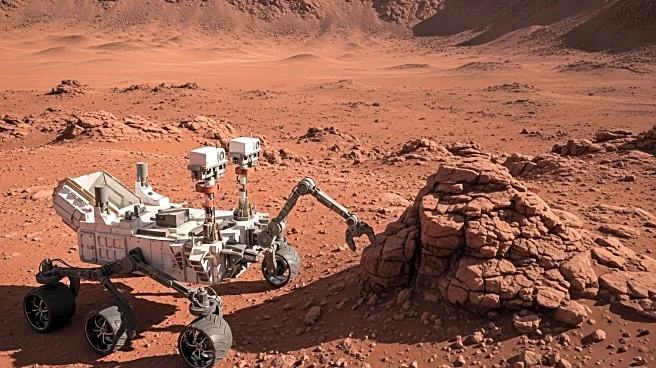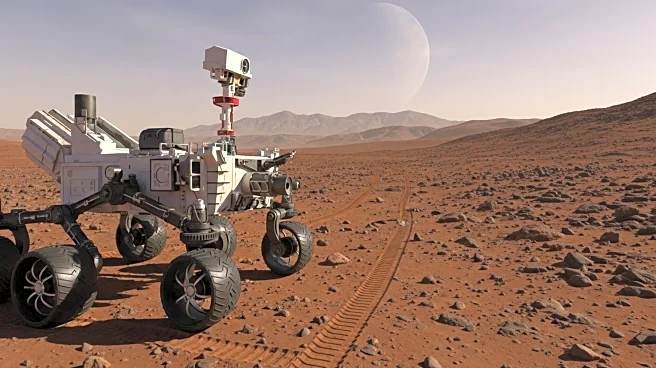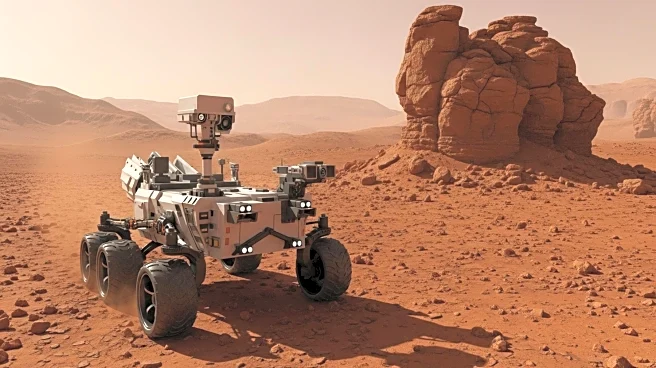What's Happening?
NASA's Perseverance rover has identified a distinctive rock outcrop called Bright Angel on Mars' Jezero Crater, which may indicate past microbial activity. The rover used five scientific instruments to analyze the rock's mineral nodules and multicolored splotches, suggesting processes that could have involved microorganisms. While not direct evidence of life, this discovery is a compelling development in the search for past life on Mars, offering insights into the planet's geological history and potential habitability.
Why It's Important?
The discovery is significant as it advances the understanding of Mars' geological history and the potential for past life on the planet. The findings contribute to ongoing research into Mars' habitability and the conditions that may have supported life. This development underscores the importance of robotic exploration in expanding human knowledge of the universe and addressing fundamental questions about life beyond Earth. It also highlights the technological capabilities of the Perseverance rover and the role of scientific collaboration in space exploration.
What's Next?
Perseverance has collected rock core samples from promising sites in Jezero Crater, including Bright Angel, with the goal of returning them to Earth for further analysis. The Mars sample return campaign aims to provide more definitive evidence of past life on Mars. However, the future of these missions faces uncertainty due to proposed budget cuts to NASA's science funding. Continued investment in Mars exploration and technological innovation will be crucial for advancing the search for life and understanding Mars' environment.
Beyond the Headlines
The discovery raises broader questions about the ethical and scientific implications of exploring and potentially colonizing Mars. It highlights the challenges of conducting remote scientific research and the importance of international collaboration in space exploration. The findings may also influence public interest and support for space missions, shaping future priorities and investments in planetary science.










